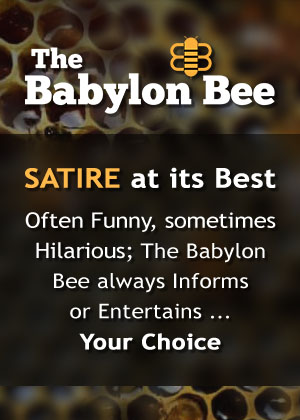The Human Touch Revealing All that is Real
Student Authorship
Publisher's Note: This post appears here courtesy of ECU News Services. The author of this post is Benjamin Abel.

Dr. Kelsey Fisher-Wellman, center, works with students during a lab at the East Carolina Heart Institute. Fisher-Wellman teaches a unique course where instead of final grades, students strive for journal publication. (Photos by Rhett Butler)
When Dr. Kelsey Fisher-Wellman began teaching students in his biochemistry lab at the East Carolina University Brody School of Medicine he knew two things - he needed to be productive with his cancer research program and for his students to be successful in their professional careers they needed to have their names on peer-reviewed articles published in academic journals.
"Letters of recommendation are okay. Grades, no one's really going to look at them. What's going to matter moving on from graduate school is, 'What have you done? What have you produced?'" Fisher-Wellman said. "And that usually comes down to publications and grants. Grants are pretty tough to get but (publishing) is something you can do. The scope of publications is getting bigger and bigger but there is, and there will always be, a space for well-done, quality research that fits into a society or field specific scientific journal."
So instead of an end-of-course grade, Fisher-Wellman's students receive co-authorship on a peer-reviewed academic journal based on real-world research that produces tangible results.
He considers his students to be trainees because they need training in the laboratory to learn how to use the equipment and scientific processes to arrive at legitimate scientific findings. The best way to do that is to have students actually do science instead of reading about science from a book or performing a "lab practical" with a pre-determined outcome.
In theory, the class seems rather simple. The first few days are reserved for some traditional instructional learning - how to work in the lab, the research objective for the semester - and then his trainees get to work.
"If a new student comes in, they have to get trained on how to use the instrumentation," Fisher-Wellman said. "Well, the best way to train somebody is by getting them engaged."
In practice, it isn't quite that simple, but the structure of the class has achieved impressive results: the three times that Fisher-Wellman has offered the course in the co-authorship format, his classes have succeeded in getting the findings of their work published twice. The third class was hampered in their work by the pandemic, which made collaboration in a laboratory setting difficult.
Fisher-Wellman believes that he has been successful with this model by providing his trainees with defined research questions that can be addressed by a group of students in a relatively tight research window of about a four-month-long semester.
"Initially, I was thinking I could get them to choose their research question, but that's too much. You also don't want it to be a cooking show, where you show up and everything's finished and the students don't see the process, but you also have to have some guardrails, so it doesn't get out of hand," Fisher-Wellman said.
Collaboration is key - to learning and getting student research published, Fisher-Wellman said.
"I want everybody to feel comfortable weighing in because that's how the research project advances," Fisher-Wellman said. "What makes for strong research programs is having people from different backgrounds - some physiology, some biochemistry, some anatomy - they're all going to view the problem a little bit differently. That's a real strength."
Fisher-Wellman's peers in the Brody School of Medicine research community applaud his unique approach: students are given agency to plan and carry out a scientific experiment and then collaborate on a manuscript explaining the results of the experiment and culminating in the peer-review process for a journal article.
"What Kelsey has done, whether he knows it or not, he's embraced a really neat form of active learning, but he's also given his students the ability to take ownership of the material and guide it to completion, in this case gathering results and then generating a manuscript, which is unusual," said Dr. Espen Spangenburg, a professor of physiology at the Brody School of Medicine.
Benefitting students
Polina Krassovskaia is a Ph.D. candidate who studies skeletal muscle metabolism and how it relates to diabetes. Her research interests have little to do with the specific mitochondria-cancer research that was the focus of the course that she took with Fisher-Wellman, but the collaboration and lab skills that she learned as a trainee are invaluable to her current outlook on science.
"The class is kind of an introduction, but it also ramps up your skills so that by the time that you walk out of this class, you're comfortable talking, doing and thinking about the mitochondrial research that was the core experiment for the course," Krassovskaia said. "We collect the data all together, and then we sit down and process the data together, we write the manuscript together. And you don't get a lot of that in any other lab, really."
For Krassovskaia, learning to see a research project through to publication, and learning how to interact with other students, though cultural and language barriers without stepping on one another's toes, was as important as any grade or authorship on a journal article.
"The publication is wonderful and that's an awesome gift at the end, but I think the class is worth it, publication or not."
Research supports Fisher-Wellman's collaborative approach. A study found that faculty members who publish research with undergraduate students generally work better with minority and disabled students, publish more and receive more grant money to fund their research.
Because the courses Fisher-Wellman taught in the model are titled "Advanced Concepts" and were geared toward research-focused graduate students, he had some leeway in the design of the course and the way the students were evaluated for their participation.
Dr. Jessica Ellis, a physiology associate professor at Brody, agrees that Fisher-Wellman's approach to training his students makes students better researchers and believes that this model of teaching is the future of biomedical research instruction.
"We should be working towards this kind of teaching, really. But it's insanely uncommon, partly because it's it is a lot of effort for the instructor, but the benefits of what the students learn are just immeasurable," Ellis said. "Every student that's gone through that class has nothing but great things to say about it."
While the training that students receive in Fisher-Wellman's classes is unique and valuable for a holistic approach to learning how to do science, Dr. Darrell Neufer, director of the East Carolina Diabetes and Obesity Institute and Fisher-Wellman's previous Ph.D. mentor, cautions that the structure of the courses can't necessarily be copied and pasted from one classroom to another.
"It's important to be a little bit real about what's involved because it does require a lot of work on (Fisher-Wellman's) part," Neufer said. "If you take half a dozen students or trainees and they don't really know how to run the experiments, he spends a lot of time teaching them what they need to know. He figures out during the course of the semester, who's going to take the lead."
Fisher-Wellman is the first person to say that his model is probably not right for everyone.
"It was a lot of work for me, way more work than it would have been if I was lecturing every day," Fisher-Wellman said. "The first time I ran the course I was kind of anti-didactic lecture; I didn't want to do any lecturing. But as I progressed through the first course I realized there needs to be three lectures that provide the foundational knowledge that I feel like everyone needs to know to be successful in the lab."
One of the reasons Spangenburg believes the co-authorship model has yet to catch on with other professors is the cost - not just in time and effort - but funding, as well.
"As far as I know, he's not receiving any help from anybody. The money that he's utilizing to fund the course is coming out of his lab supplies so I think that's part of the reason it hasn't caught on," Spangenburg said.
The monetary costs - and the investment of time and teaching effort - may well be prohibitive for many medical research professors. But as Fisher-Wellman's sees it, for him to be a successful teacher and for his students to find success as a professional scientists, need to have peer-reviewed journal articles under their belt.
"The bar to publish is so high that you have to be in a lab for several years before you work on a project long enough to warrant publication. What we're trying to do is offer a space for succinct research questions and well-planned studies that can get published in biochemistry specific journals," Fisher-Wellman said.
Go Back

When Dr. Kelsey Fisher-Wellman began teaching students in his biochemistry lab at the East Carolina University Brody School of Medicine he knew two things - he needed to be productive with his cancer research program and for his students to be successful in their professional careers they needed to have their names on peer-reviewed articles published in academic journals.
"Letters of recommendation are okay. Grades, no one's really going to look at them. What's going to matter moving on from graduate school is, 'What have you done? What have you produced?'" Fisher-Wellman said. "And that usually comes down to publications and grants. Grants are pretty tough to get but (publishing) is something you can do. The scope of publications is getting bigger and bigger but there is, and there will always be, a space for well-done, quality research that fits into a society or field specific scientific journal."
So instead of an end-of-course grade, Fisher-Wellman's students receive co-authorship on a peer-reviewed academic journal based on real-world research that produces tangible results.
He considers his students to be trainees because they need training in the laboratory to learn how to use the equipment and scientific processes to arrive at legitimate scientific findings. The best way to do that is to have students actually do science instead of reading about science from a book or performing a "lab practical" with a pre-determined outcome.
In theory, the class seems rather simple. The first few days are reserved for some traditional instructional learning - how to work in the lab, the research objective for the semester - and then his trainees get to work.
"If a new student comes in, they have to get trained on how to use the instrumentation," Fisher-Wellman said. "Well, the best way to train somebody is by getting them engaged."
In practice, it isn't quite that simple, but the structure of the class has achieved impressive results: the three times that Fisher-Wellman has offered the course in the co-authorship format, his classes have succeeded in getting the findings of their work published twice. The third class was hampered in their work by the pandemic, which made collaboration in a laboratory setting difficult.
Fisher-Wellman believes that he has been successful with this model by providing his trainees with defined research questions that can be addressed by a group of students in a relatively tight research window of about a four-month-long semester.
"Initially, I was thinking I could get them to choose their research question, but that's too much. You also don't want it to be a cooking show, where you show up and everything's finished and the students don't see the process, but you also have to have some guardrails, so it doesn't get out of hand," Fisher-Wellman said.
Collaboration is key - to learning and getting student research published, Fisher-Wellman said.
"I want everybody to feel comfortable weighing in because that's how the research project advances," Fisher-Wellman said. "What makes for strong research programs is having people from different backgrounds - some physiology, some biochemistry, some anatomy - they're all going to view the problem a little bit differently. That's a real strength."
Fisher-Wellman's peers in the Brody School of Medicine research community applaud his unique approach: students are given agency to plan and carry out a scientific experiment and then collaborate on a manuscript explaining the results of the experiment and culminating in the peer-review process for a journal article.
"What Kelsey has done, whether he knows it or not, he's embraced a really neat form of active learning, but he's also given his students the ability to take ownership of the material and guide it to completion, in this case gathering results and then generating a manuscript, which is unusual," said Dr. Espen Spangenburg, a professor of physiology at the Brody School of Medicine.
Benefitting students
Polina Krassovskaia is a Ph.D. candidate who studies skeletal muscle metabolism and how it relates to diabetes. Her research interests have little to do with the specific mitochondria-cancer research that was the focus of the course that she took with Fisher-Wellman, but the collaboration and lab skills that she learned as a trainee are invaluable to her current outlook on science.
"The class is kind of an introduction, but it also ramps up your skills so that by the time that you walk out of this class, you're comfortable talking, doing and thinking about the mitochondrial research that was the core experiment for the course," Krassovskaia said. "We collect the data all together, and then we sit down and process the data together, we write the manuscript together. And you don't get a lot of that in any other lab, really."
For Krassovskaia, learning to see a research project through to publication, and learning how to interact with other students, though cultural and language barriers without stepping on one another's toes, was as important as any grade or authorship on a journal article.
"The publication is wonderful and that's an awesome gift at the end, but I think the class is worth it, publication or not."
Research supports Fisher-Wellman's collaborative approach. A study found that faculty members who publish research with undergraduate students generally work better with minority and disabled students, publish more and receive more grant money to fund their research.
Because the courses Fisher-Wellman taught in the model are titled "Advanced Concepts" and were geared toward research-focused graduate students, he had some leeway in the design of the course and the way the students were evaluated for their participation.
Dr. Jessica Ellis, a physiology associate professor at Brody, agrees that Fisher-Wellman's approach to training his students makes students better researchers and believes that this model of teaching is the future of biomedical research instruction.
"We should be working towards this kind of teaching, really. But it's insanely uncommon, partly because it's it is a lot of effort for the instructor, but the benefits of what the students learn are just immeasurable," Ellis said. "Every student that's gone through that class has nothing but great things to say about it."
While the training that students receive in Fisher-Wellman's classes is unique and valuable for a holistic approach to learning how to do science, Dr. Darrell Neufer, director of the East Carolina Diabetes and Obesity Institute and Fisher-Wellman's previous Ph.D. mentor, cautions that the structure of the courses can't necessarily be copied and pasted from one classroom to another.
"It's important to be a little bit real about what's involved because it does require a lot of work on (Fisher-Wellman's) part," Neufer said. "If you take half a dozen students or trainees and they don't really know how to run the experiments, he spends a lot of time teaching them what they need to know. He figures out during the course of the semester, who's going to take the lead."
Fisher-Wellman is the first person to say that his model is probably not right for everyone.
"It was a lot of work for me, way more work than it would have been if I was lecturing every day," Fisher-Wellman said. "The first time I ran the course I was kind of anti-didactic lecture; I didn't want to do any lecturing. But as I progressed through the first course I realized there needs to be three lectures that provide the foundational knowledge that I feel like everyone needs to know to be successful in the lab."
One of the reasons Spangenburg believes the co-authorship model has yet to catch on with other professors is the cost - not just in time and effort - but funding, as well.
"As far as I know, he's not receiving any help from anybody. The money that he's utilizing to fund the course is coming out of his lab supplies so I think that's part of the reason it hasn't caught on," Spangenburg said.
The monetary costs - and the investment of time and teaching effort - may well be prohibitive for many medical research professors. But as Fisher-Wellman's sees it, for him to be a successful teacher and for his students to find success as a professional scientists, need to have peer-reviewed journal articles under their belt.
"The bar to publish is so high that you have to be in a lab for several years before you work on a project long enough to warrant publication. What we're trying to do is offer a space for succinct research questions and well-planned studies that can get published in biochemistry specific journals," Fisher-Wellman said.
| Golden LEAF announces $5.4M in funding at October meeting | East Carolina University, School News, The Region, Neighboring Counties | Virginia drone facility expands to Washington-Warren Airport |





















